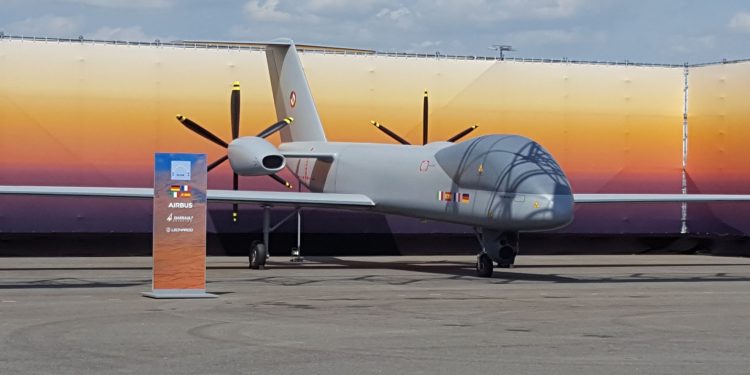France is confident that a deal on developing a joint European military drone project will be signed this year, after the conclusion of tough price negotiations with manufacturers, the defence ministry said Wednesday.
“A few small details” still need to be worked out, but “we’re rather optimistic about this project,” an official in Defence Minister Florence Parly’s office said.
The Eurodrone venture involving France, Germany, Italy and Spain was announced in 2015 as a way for European nations to reduce their reliance on American-made Reaper drones.
Pan-European plane builder Airbus is the lead manufacturer for the planned medium-altitude, long-range vehicle, with France’s Dassault Aviation and Italy’s Leonardo also participating.
But disputes over the drone’s cost have held up the official launch of development and manufacturing.
The four governments have set a budget of 7.1 billion euros ($8.4 billion) to acquire 63 Eurodrones, spread over three operating systems.
The goal is to have each drone cost around 160 million euros, well below the 200 million euros per Reaper, with each flight-hour costing 3,000 euros instead of 4,000 for the US rival.
“We’re pretty much there,” the ministry official said. “Obviously there are development costs, a buy-in for having a European drone — Sovereignty has a cost, not at any price, but we accept this.”
If it goes ahead this year, the first Eurodrone system would be delivered to Germany in 2027, and to France in 2028.
On Thursday, Parly will meet with her German counterpart Annegret Kramp-Karrenbauer at the French airbase in Evreux, northwest France, to break ground on a new hanger housing a Franco-Germany squadron of C130J transport planes.
French officials say the squadron is a concrete example of the closer military cooperation among EU members being pushed by President Emmanuel Macron, who has warned that the NATO alliance is “brain dead.”
Parly and Kramp-Karrenbauer will then travel to an Airbus site in Manching, Germany, for presentations on the Eurodrone as well as Europe’s next-generation fighter jet.
The jet with its associated technologies, known as the Future Combat Air System, is scheduled to be operational in around 20 years, after the initial research and development contract was signed earlier this year.










